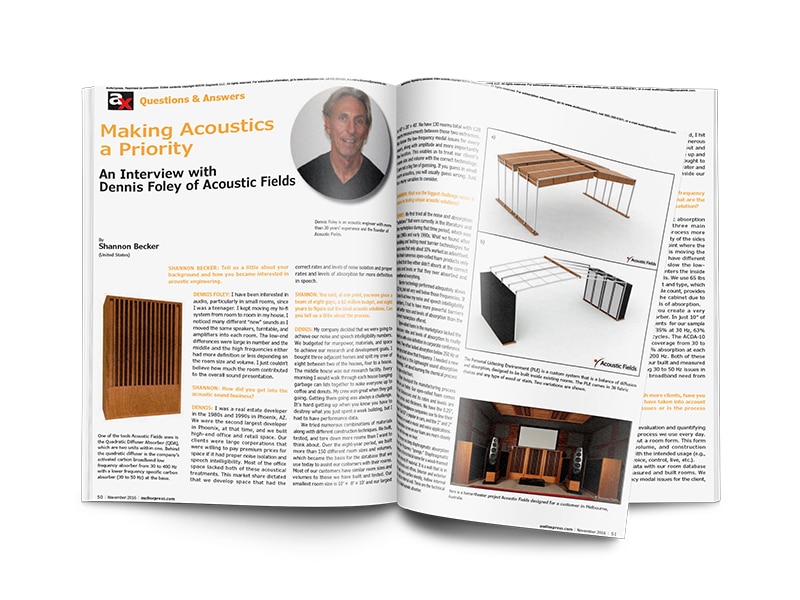In this interview with audioxpress.com, chief acoustics engineer Dennis Foley talks about his beginnings in room acoustics and the latest projects of Acoustic Fields. The following is an excerpt of the interview.
SHANNON BECKER: Tell us a little about your background and how you became interested in acoustic engineering.
DENNIS FOLEY: I have been interested in audio, particularly in small rooms, since I was a teenager. I kept moving my hi-fi system from room to room in my house. I noticed many different “new” sounds as I moved the same speakers, turntable, and amplifiers into each room. The low-end differences were large in number and the middle and the high frequencies either had more definition or less depending on the room size and volume. I just couldn’t believe how much the room contributed to the overall sound presentation.
SHANNON: How did you get into the acoustic sound business?
DENNIS: I was a real estate developer in the 1980s and 1990s in Phoenix, AZ. We were the second largest developer in Phoenix, at that time, and we built high-end office and retail space. Our clients were large corporations that were willing to pay premium prices for space if it had proper noise isolation and speech intelligibility. Most of the office space lacked both of these acoustical treatments. This market share dictated that we develop space that had the correct rates and levels of noise isolation and proper rates and levels of absorption for more definition in speech.
SHANNON: You said, at one point, you were given a team of eight guys, a $2 million budget, and eight years to figure out the ideal acoustic solutions. Can you tell us a little about the process.
DENNIS: My company decided that we were going to achieve our noise and speech intelligibility numbers. We budgeted for manpower, materials, and space to achieve our research and development goals. I bought three adjacent homes and split my crew of eight between two of the houses, four to a house. The middle house was our research facility. Every morning I would walk through each house banging garbage can lids together to wake everyone up to coffee and donuts. My crew was great when they got going. Getting them going was always a challenge. It’s hard getting up when you know you have to destroy what you just spent a week building, but I had to have performance data. We tried numerous combinations of materials along with different construction techniques. We built, tested, and tore down more rooms than I want to think about. Over the eight-year period, we built more than 150 different room sizes and volumes, which became the basis for the database that we use today to assist our customers with their rooms. Most of our customers have similar room sizes and volumes to those we have built and tested. Our smallest room size is 10’ × 8’ × 10’ and our largest is 40’ × 20’ × 40’. We have 130 rooms total with 128 room measurements between those two extremes. We know the low-frequency modal issues for every room, along with amplitude and more importantly the location. This enables us to treat our client’s room size and volume with the correct technology. I am not a big fan of guessing. If you guess in small room acoustics, you will usually guess wrong. Just too many variables to consider.
For the full interview please purchase the November 2016 issue of the audioxpress magazine.







